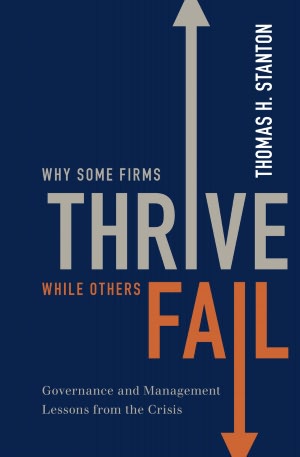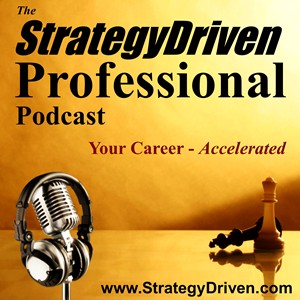Recommended Resource – Why Some Firms Thrive While Others Fail
Why Some Firms Thrive While Others Fail: Governance and Management Lessons from the Crisis
by Thomas Stanton
About the Book
Why Some Firms Thrive While Others Fail by Thomas Stanton examines the fundamental shortcomings of both public and private financial sector companies as revealed during America’s ‘Great Recession.’ Thomas focuses on the areas of management, organization, and governance; contrasting the shortcomings of companies that failed with the sound practices of comparable organizations fairing well during the economic downturn.
Thomas concludes his book by relating the financial sector’s lessons learned to businesses within other industries that have faced similarly significant challenges. The result is the revelation of sound risk management practices that can help ensure companies in any industry are prepared to recognize and effectively deal with crisis situations.
Benefits of Using this Book
StrategyDriven Contributors like Why Some Firms Thrive While Others Fail for its insightful examination of why some companies respond well to crisis while others simply fail. Thomas provides insight not only to the direct management, organization, and governance issues hindering crisis recognition and response but the far more elusive combinations of attributes from these three areas that stymie if not paralyze an organization. By applying the best practices presented, organization leaders can better position their organization to recognize the onset of significant challenges – key to effectively dealing with any crisis – and react in a timely manner so to prevent a catastrophic outcome. We particularly appreciated Thomas’s extension of his book’s principles to other industries including:
- Petroleum industry
- Mining industry
- Natural gas distribution industry
- Hospital / Medical industry
- Government
This extension makes the book relevant to leaders of any organizational type.
StrategyDriven Contributors have written extensively on the topic of crisis management. We found Thomas’s principles to be highly consistent with and expounding to the crisis management best practices we endorse; making Why Some Firms Thrive While Others Fail a StrategyDriven recommended read.


 StrategyDriven Professional Podcasts focus on the tools and techniques business professionals can use to accelerate their careers and personal goals achievement. These podcasts elaborate on the principle, best practice, and warning flag articles found on the StrategyDriven Professional website.
StrategyDriven Professional Podcasts focus on the tools and techniques business professionals can use to accelerate their careers and personal goals achievement. These podcasts elaborate on the principle, best practice, and warning flag articles found on the StrategyDriven Professional website.
 Wendy Powell is the author of
Wendy Powell is the author of  Nathan Ives is a StrategyDriven Principal, and Host of the StrategyDriven Podcast. For over twenty years, he has served as trusted advisor to executives and managers at dozens of Fortune 500 and smaller companies in the areas of management effectiveness, organizational development, and process improvement. To read Nathan’s complete biography,
Nathan Ives is a StrategyDriven Principal, and Host of the StrategyDriven Podcast. For over twenty years, he has served as trusted advisor to executives and managers at dozens of Fortune 500 and smaller companies in the areas of management effectiveness, organizational development, and process improvement. To read Nathan’s complete biography,  Every decision involves risk, with time underlying all mitigating factors. Some decisions occur too late, resulting in the forfeiture of a situational opportunity, competitive advantage, or adverse outcome avoidance. Other decisions are made too quickly, unnecessarily increasing risk because of diminished data gathering and contemplation that better informs the choice.
Every decision involves risk, with time underlying all mitigating factors. Some decisions occur too late, resulting in the forfeiture of a situational opportunity, competitive advantage, or adverse outcome avoidance. Other decisions are made too quickly, unnecessarily increasing risk because of diminished data gathering and contemplation that better informs the choice.
 Feedback mechanisms serve as a reflection of an organization, business unit, department, or individual’s performance. At times, these mirrors reveal exceptional performance; in other cases, good or satisfactory performance; and in some instances poor or unacceptable performance. Too often, the individual or group holding the mirror, whether a performance metric, an internal self-assessment, or a third party audit, is blamed for the performance indicated. Regardless of who provides the performance report, this person or group should not be attacked for identifying instances of success or failure.
Feedback mechanisms serve as a reflection of an organization, business unit, department, or individual’s performance. At times, these mirrors reveal exceptional performance; in other cases, good or satisfactory performance; and in some instances poor or unacceptable performance. Too often, the individual or group holding the mirror, whether a performance metric, an internal self-assessment, or a third party audit, is blamed for the performance indicated. Regardless of who provides the performance report, this person or group should not be attacked for identifying instances of success or failure.